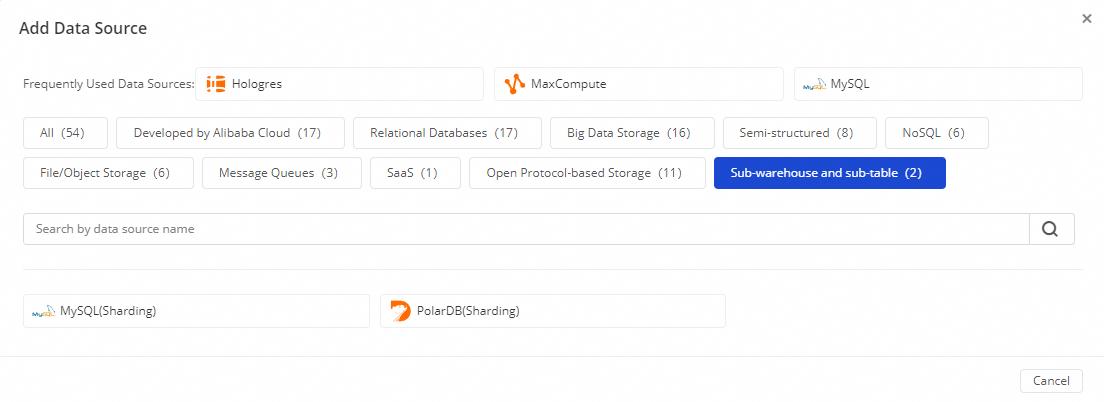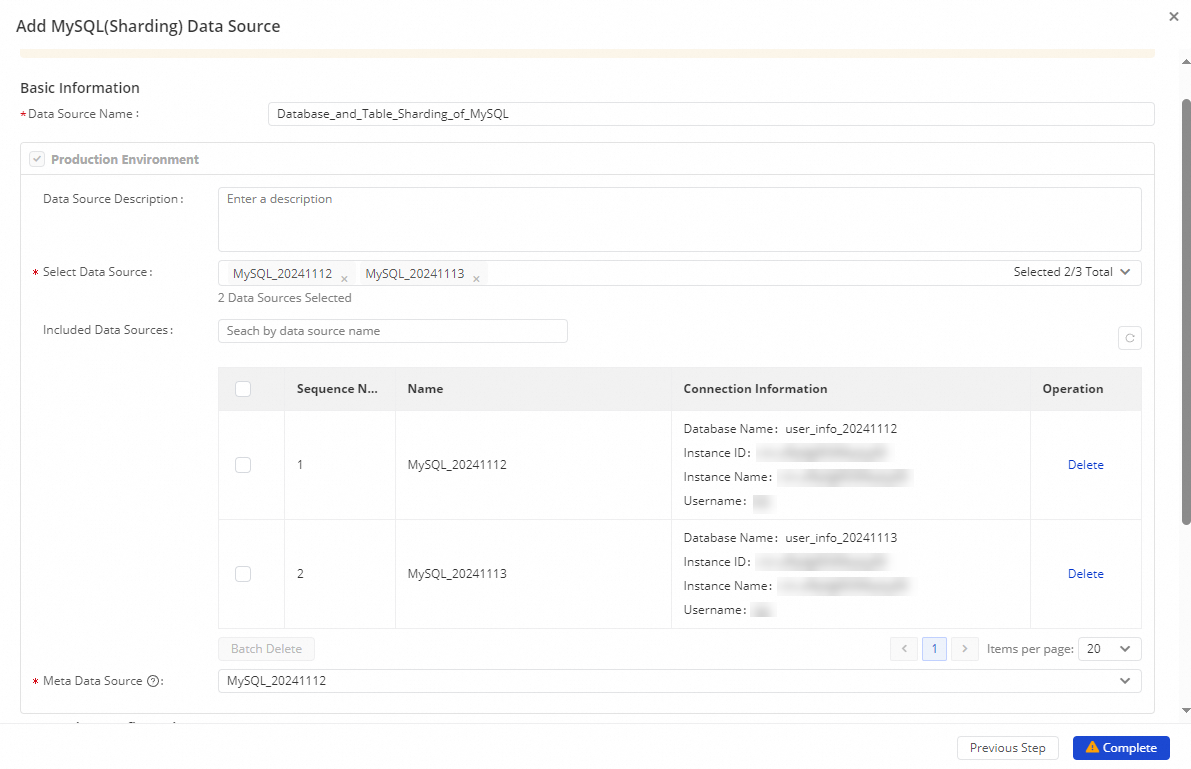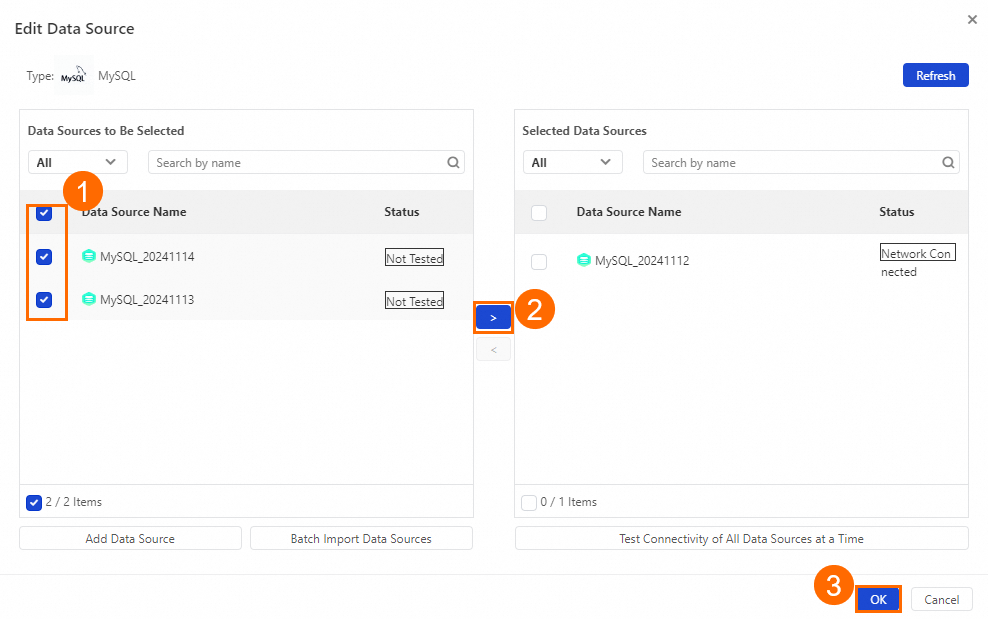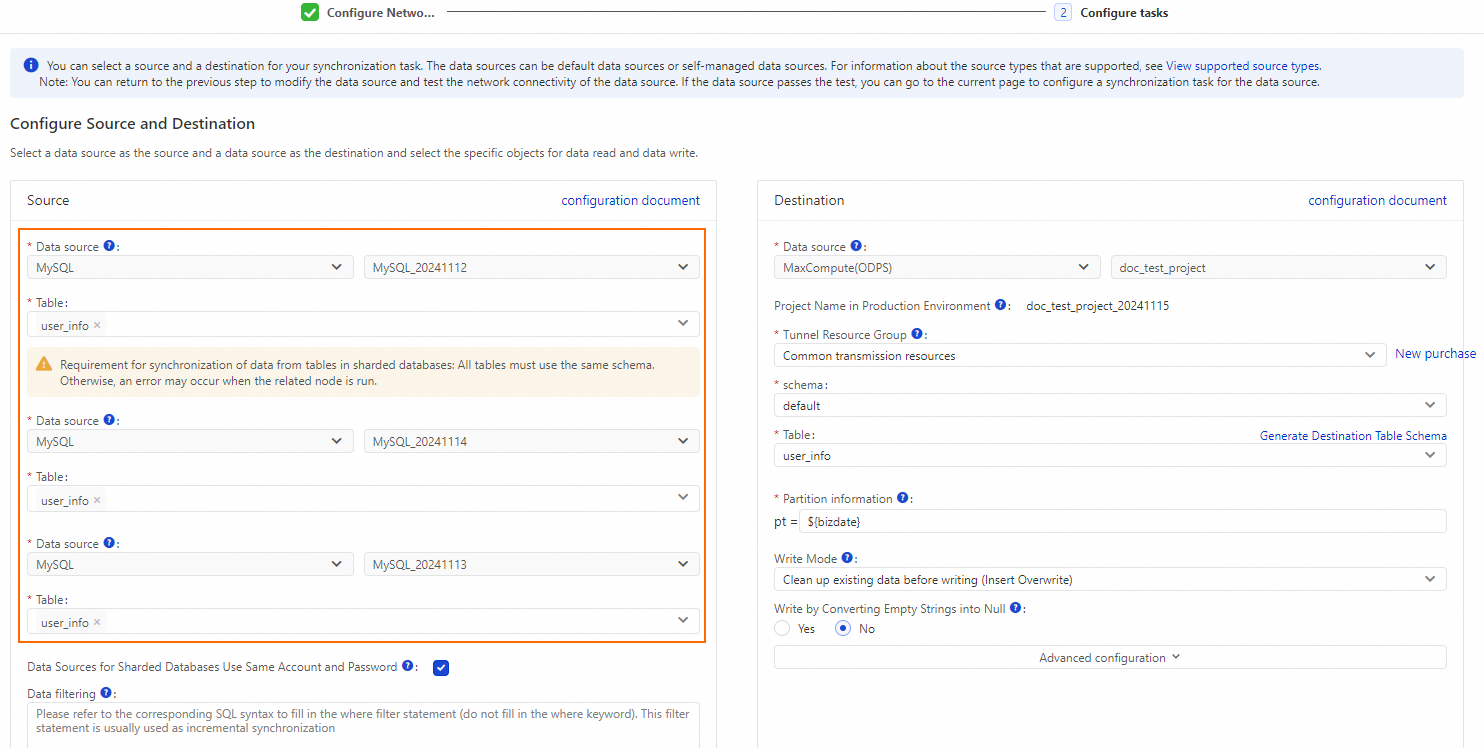Comparison item | Sharded data source + codeless UI (recommended) | Common data source + codeless UI | Code editor |
Support for the codeless UI | Supported. | Supported. | Not Supported. |
Support for specifying source table names by rule | Specifying source table names based on a regular expression is supported. When the related synchronization task is run, the synchronization task matches tables based on the regular expression and synchronizes data from the matched tables. | Not supported. | Specifying source table names based on a number range is supported. Example: tb_[1-10]. The numbers in the range must be consecutive, and each table specified by the range must exist. |
Consistency of table schemas | A policy for missing fields can be configured. Missing fields in some source tables are allowed, and the corresponding fields are synchronized to the destination as NULL values. | The schemas of all source tables must be the same. |
Reference for field mappings | Fields in the first mapped table in the meta data source specified for the sharded data source are used as references for field mappings. | Fields in the first table in the first data source are used as references for field mappings. | You must manually specify the fields for which you want to configure mappings. |
Number of supported data sources | A maximum of 5,000 data sources are supported. | We recommend that you configure no more than 50 data sources. |
Requirement for modifying or deploying the related synchronization task if data sources are changed | You do not need to modify or deploy the synchronization task. After you change the data sources for the synchronization task, the change takes effect when the latest instance generated for the synchronization task is run. | You must modify and deploy the synchronization task. You must add the required data source for the synchronization task and specify the names of tables from which you want to synchronize data. |
Supported data source types | MySQL and PolarDB | MySQL, PolarDB, and AnalyticDB | MySQL, PolarDB, AnalyticDB, SQL Server, Oracle, PostgreSQL, DM, DB2, and Oracle |
 Elastic Compute Service (ECS)
Elastic Compute Service (ECS)
 Container Compute Service (ACS)
Container Compute Service (ACS)



































